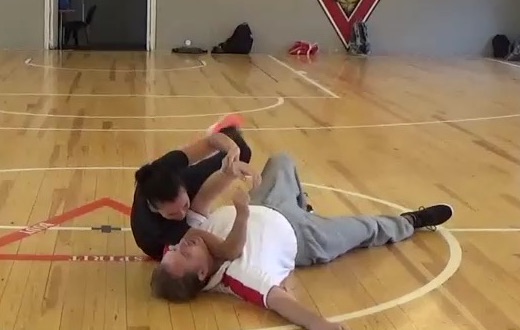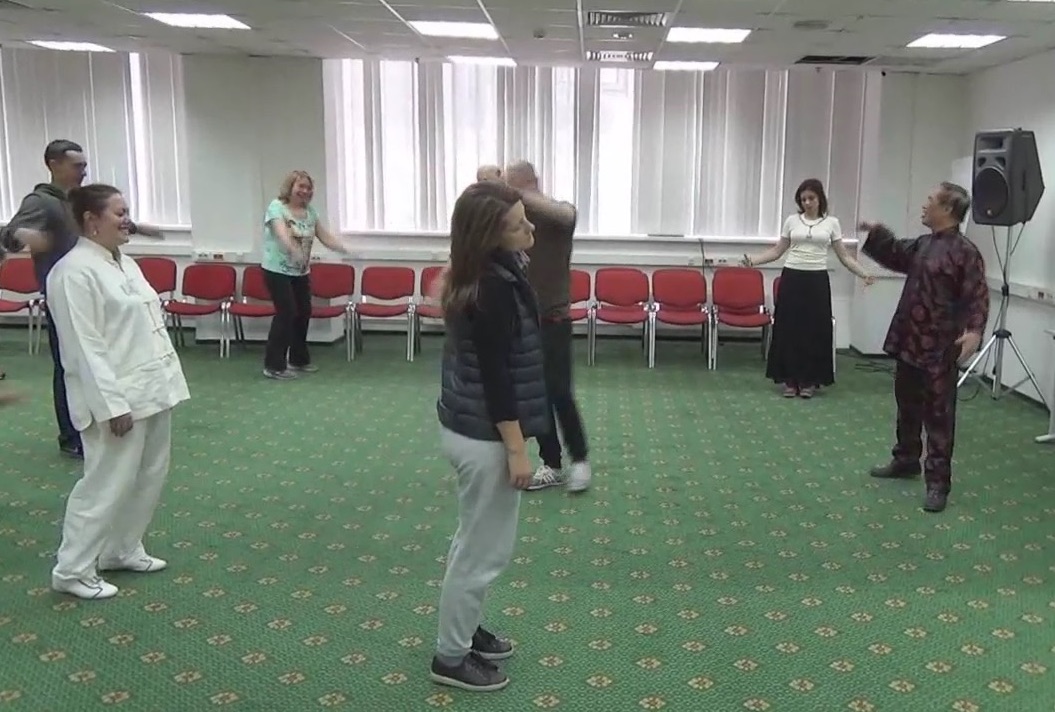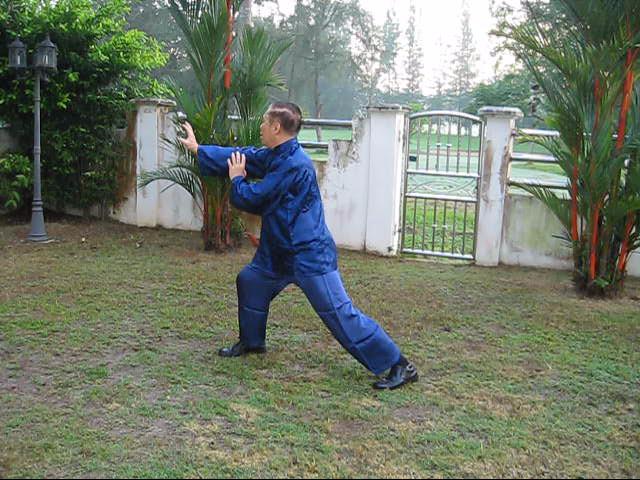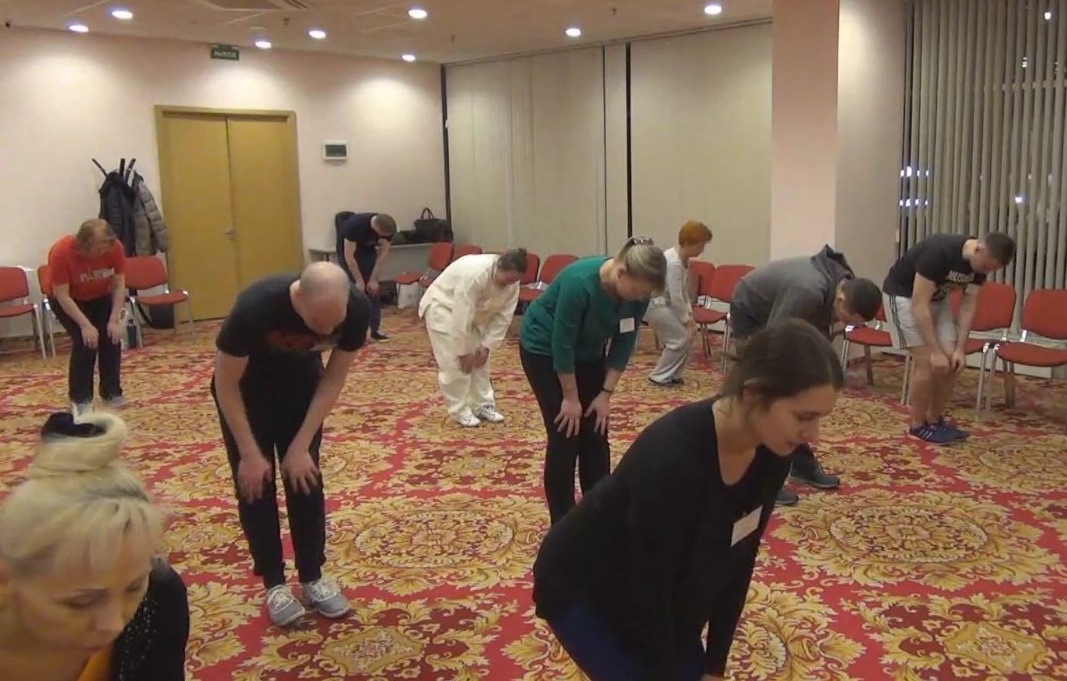SELECTION OF QUESTIONS AND ANSWERS
APRIL 2019 PART 1

Kungfu is for fighting
Question 1
My friend and I learn Shaolin Kungfu from a famous instructor here. But we still cannot use our techniques to fight. I see in your webpages that your students use kungfu techniques for sparring. We still put on our gloves when we spar. Can Shaolin Kungfu be used for fighting?
— Jacob, USA
Answer
Of course, Shaolin Kungfu can be used for fighting. This is fully substantiated in writing and painting. In the 19th and 20th centuries many masters from various countries went to China to test her kungfu, and all of them were convincingly defeated by Chinese masters, most of them using Shaolin Kungfu. To say that Shaolin Kungfu cannot be used for fighting is actually insulting past Shaolin masters, though you and many who say so may not mean to be insulting.
Your question as whether Shaolin Kungfu can be used for fighting is actually illuminating. Today many of those who practice Shaolin Kungfu cannot use it for fighting. They use Boxing or other martial techniques when they have to spar or fight.
There are many reasons for this degeneration.
A main reason is that the present Chinese government promotes Shaolin Kungfu as a sport, and not for fighting. The government is pragmatic; promoting it as a sport gives the people recreation, promoting it for combat is outdated. Today wushu, which is the Chinese term for kungfu, and almost all of wushu is Shaolin, is for demonstration, there is no fighting. The promotion of wushu has great influence on Shaolin Kungfu today.
We in Shaolin Wahnam independently adopt this pragmatic attitude. Although we still practice combat application, we train kungfu, Shaolin and other styles, for enhancing our lives, like giving us good health, vitality, longevity, peak performance, mental clarity and spiritual joys. We practice combat application because it is precisely this training that gives us the wonderful benefits of kungfu.
Another main reason is that it takes a longer time to be proficient in using Shaolin Kungfu for fighting. As a rough estimate, it takes just 6 months for a person using Boxing for fighting, but it takes him three years, if he is fortunate to learn the techniques and skills, in Shaolin Kungfu to be combat efficient.
A third reason is that the methodology of kungfu fighting is generally lost. This is due to various factors. One important factor is the change of times. Kungfu fighting was necessary in the past, but not in our law-abiding societies. An important factor was the influx of Karate and later Taekwondo schools, which openly advocated free sparring as part of their training. Many kungfu practitioners copied their methods.
We in Shaolin Wahnam is one of the very few schools that still use kungfu techniques and skills for fighting. Besides enabling us to be combat efficient, our combat application using kungfu techniques and skills also gives us many other daily benefits.
Today, sanda which mostly uses Boxing techniques is popular among kungfu practitioners. Actually, sanda, which means free sparring in Chinese, has been in kungfu training since classical times. Of course, in the past when kungfu practitioners sparred or fought, they used kungfu techniques.
A main reason why combatants put on gloves when they spar is to avoid serious injury. Another reason is influence from Boxing.
The irony is that in our sparring where combatants do not put on gloves, there is no injury, and is often marked by laughter. This is because our students are used to having excellent control, which was the norm in the past.
Question 2
Was it true that masters in the past could fight using kungfu?
Answer
It was certainly true that masters in the past could use kungfu for fighting. The masters did not use gloves, and they fought the way they trained. Fighting using kungfu techniques and skills was well documented in writings and pictures.
Writings of the thirteen monks who helped to set up the Tang Dynasty in the early 7th century and of Zhang San Feng in the 12th century in the Song Dynasty, for example, clearly showed the masters used kungfu techniques and skills for fighting. In later periods during the times of Yang Lu Chan in the late 18th century, and of Wong Fei Hoong in the 19th century, masters used kungfu techniques and skills for fighting.
Not only masters in the past but even ordinary students used kungfu for fighting. It would be silly of them not to use kungfu, as they had not only trained in kungfu, but also kungfu was most sophisticated compared to other martial arts. Many martial arts would face much difficulty facing kungfu techniques. The various methods of developing internal force, which was unique in kungfu, were not found in other martial arts. Kungfu schools systematically and progressively taught tactics and strategies, which were not available in other arts.
Sanda, which means free fighting, was an important part of kungfu training. Kungfu practitioners, of course, used kungfu for fighting.

Chi flow is the essence of chi kung
Question 3
What chi kung exercises should I practice to improve my eye-sight?
— Rita, Russia
Answer
One of the best exercises to improve eye-sight is the Shaolin Eight Eye Techniques. The eight techniques are:
- Counting Leaves
- Rolling Stars
- Angry Eyes
- Far and Near
- Focusing One
- Nourishing Spirit
- Point Massage
- Heavenly Drums
Question 4
I was surprised that everyone in our class had a chi flow. You have mentioned that chi flow is very important in chi kung. I have practiced chi kung before from another school, but there was no mention of chi flow.
Answer
Chi flow, or "xing qi" in Chinese, is very important in chi kung. It is its essence. It is chi flow that gives the benefits of chi kung, like overcoming illness, having good health, vitality, longevity, mental clarity and spiritual joys. Not many people know this fact. Indeed, chi kung has degraded to become gentle physical exercise.
If there is no chi flow, even when practitioners perform chi kung techniques they will not have chi kung benefits. This is the problem of more than 80% of chi kung practitioners today. Their chi kung techniques are correct, and often beautiful to watch, but they remain weak and sickly despite having practiced their art for many years.
In our school, chi flow is obvious. An observer can see our practitioners move about in chi flow. But in most other school, the chi flow cannot be obviously seen. The chi flow, if any, is inside the practitioners' bodies. In most cases, there is no chi flow.
The certified instructors in our school can also help their students to attain a chi flow in half an hour. But because their students have more time, like three months, in their regular classes, for the students' benefit our instructors take a longer time to effect a chi flow. I only have a few hours in my courses, so I have to effect a chi flow fast.

Dragon claw of Wudang Taijiquan
Question 5
What is the difference between a dragon claw and a tiger claw?
— Steffen, Germany
Answer
In appearance, a dragon claw is more open than a tiger claw. Many practitioners hook their thumb when performing the tiger-claw, and round their fingers like holding an imaginary ball when performing a dragon claw.
In application, a dragon claw is more for tearing and jabbing the fingers into the flesh of an opponent. The tiger claw is more for gripping, like gripping energy points in chin-na.
This is relative. One may grip with a dragon claw and tear with a tiger claw. Or his dragon claw may look like a tiger claw, and vice versa. Kungfu is alive. He limits himself unnecessarily if he insists on holding a dragon claw to use it for tearing, or a tiger claw to use it for gripping.
Question 6
I'll be glad to know if there is any kind of chi kung exercises that I can practice in order to regulate my menstruation cycle and activate my body to get pregnant.
— Maggie, Australia
Answer
It is a common mistake for many people to think that if they know a chi kung technique, they will derive chi kung benefits, like regulating their menstruation circle, activating their body to get pregnant, overcoming illness, maintaining good health, and attaining vitality and longevity. This is not so.
Let us take a few examples. Suppose you know some driving techniques, whcih you can learn from a book or a video. But if you do not have any driving skills you still do not know how to drive even when you know the techniques.
Suppose you learn some swimming techniques. You can also learn them from a book or a video. But if you do not have swimming skills, you will not know how to swim even if you know the techniques.
It is the same with chi kung. If you just know the techniques but do not have the skills, you will still cannot perform any genuine chi kung or get any chi kung benefits.
Chi kung skills need to be learned from a master. I would suggest you attend my Intensive Chi Kung Course. Please check my website for available dates. I don't offer such courses often. Regulating your mensuration cycle and getting pregnant are relative easy with chi kung practice.
The last time you were late in applying for a chi kung course. So, this time you must apply early.

The knees are related to the kidney system
Question 7
Are knee problems related to any organs?
— Vladimir, Russia
Answer
Knee problems may or may not relate to internal organs, but internal organs have a direct effect on external organs, like the kidneys affecting the knees. This is a fact in traditional Chinese medicine not normally known by many modern people.
If the kidneys are weak, it may manifest as knee problems. In fact, in Chinese medical philosophy those who indulge in sex excessively may weaken their kidneys, and thus have knee problems.
Many elderly people have weak knees, often due to insufficient lubricant at their knee joints. I am not sure whether this is related to their kidneys. But strengthening their kidneys, like performing "Nourishing Kidneys", "Pushing Mountain" and "Rotating Knees" in Eighteen Lohan Hands, or performing the Bear Play in Five-Animal Play, can overcome their problems. I believe these exercises produce more lubricant for their knee joints.
On the other hand, when a person injures his knees, like in falling or being hit, his knee problems may not be directly related to his internal organs. He should consult a kungfu master or a traumatologist to fix the knee problems. A good kungfu master or a good traumatologist will also strengthen his kidneys.
Question 8
What are the internal organs that are related to emotional problems?
Answer
According to traditional Chinese medical philosophy, emotional problems are directly related to internal organs. In other words, if a person has an emotional problem, like being depressed, his relative internal organ will be affected, like his lungs will be weakened. It works both ways. If a person has weak lungs, he is likely to be depressed.
The internal organs that are related to emotions are as follows:
- heart -- joy
- liver -- anger
- spleen -- anxiety
- lungs -- sorrow
- kidneys -- fear
The five elementary processes of metal, water, wood, fire and earth can be used to overcome emotional problems. For example depression is related to wood in the five elementary processes, and can be destroyed by fire, which is related to joy. If a depressed person can be made happy with frequent laughter, his depression can be overcome.
There have been many interesting case histories of Chinese doctors using the five elementary processes to overcome emotional problems. Tuberculosis affects the lungs which is represented as metal in the five elementary processes. Metal is nourished by earth, which corresponds to the spleen and stomach. During a tuberculosis epidemic in Vietnam, which was under the suzerainty of the Ming Dynasty then, a Ming emperor sent a team of Chinese doctors who saved thousands of lives by nourishing tuberculosis patients with good food.
LINKS
Selected Reading
- Shaolin Kungfu Now and 500 Years Ago
- Qigong: a Cure for Cancer and Chronic, Degenerative Diseases? A Global Interest
- Can We Learn Good Kungfu from Books?
- The Mechanics of Taijiquan in Overcoming Bigger, Stronger Opponents
- South to the Old Smoky
